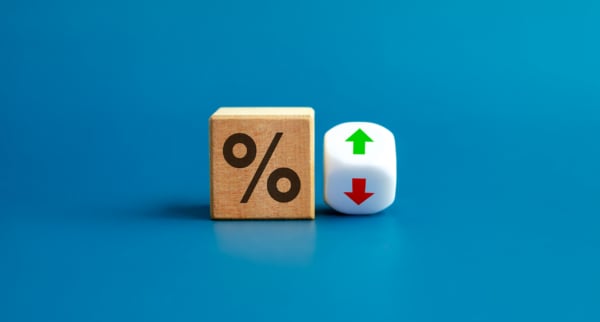ON THIS PAGE
- What is a cash advance on a credit card?
- How does a cash advance work?
- When does it make sense to use a credit card cash advance?
- Pros and Cons of taking a credit card cash advance
- How to minimize the cost of a cash advance
- Best alternatives to credit card cash advances
- The bottom line on credit card cash advances
When you’re facing an emergency, a cash advance may present itself as an opportune way to get money. While cash advances are one way to possibly solve a cash-shortage issue, they can also easily cause other problems. Effectively, accessing cash from your credit card is a short-term loan and, unfortunately, is an expensive one at that. Before taking a cash advance, go into the decision with an understanding of the costs and how to reduce any negative impact.
What is a cash advance on a credit card?
In theory, a cash advance is a short-term loan on your credit card. When you request an advance, you instantly receive cash taken against the credit limit on your card. The cash advance limit is commonly a percentage of your overall limit.
The cash advance limit is a component of the total availability on a card, thus immediately making less credit available for purchases. A cash advance may seem like a good idea when you need money fast, but it’s a costly decision.
How does a cash advance work?
It isn’t difficult to take a cash advance on a credit card. Visiting an ATM or your local bank is typically one of the better choices to receive cash. Assuming the amount requested doesn’t exceed the cash advance or ATM limit, you instantly receive the cash. Be aware that you will need your card’s PIN to take an advance.
Some issuing banks allow cardholders to take a cash advance via convenience checks. Additionally, using a card through payment apps like Venmo may be considered the same as an advance by some banks.
Cash advances are often rife with fees. Issuers charge a flat dollar amount or percentage of the amount received per advance. This is on top of any ATM withdrawal fee you may incur. Furthermore, interest begins accruing immediately on advances. The interest charges on cash advances are usually higher than on purchases.
When does it make sense to use a credit card cash advance?
Ultimately, it’s really never a good idea to take a cash advance on a credit card. There is no grace period, so interest accrues immediately. And, you commonly incur fees for the cash. If it’s not a legitimate emergency, you risk adding unnecessary indebtedness to your life.
If you genuinely need the money, it’s best to only take a cash advance on a credit card when you have a plan to pay it back quickly. Some credit cards may not charge a cash advance fee; in that case, it might be a good choice.
➤ SEE MORE:Can you get cash back with a credit card?
Pros and Cons of taking a credit card cash advance
Accessing instant cash via your credit card has benefits and disadvantages. These are some common selling points and detractors of cash advances.
Pros:
- Immediate cash: You can commonly receive cash quickly, often within minutes, if you use an ATM.
- No credit check: You’re not applying for new credit. The credit is already in your name; you can get money instantly.
- Cheaper than payday loans: Cash advances are expensive, but they’re usually cheaper compared to payday loans. If you need cash fast, it makes sense to accrue less fees.
Cons:
- Zero grace period: You typically receive a minimum grace period of 21 days on credit card charges. Cash advances don’t enjoy this benefit.
- They’re expensive: Cash advance fees typically cost at least $10 or $15, or 5% of the amount received. This is on top of ATM fees and exorbitant interest charges that begin amassing immediately.
- Increases your credit utilization: Credit utilization directly impacts your credit score. Cash advances increase this ratio, potentially harming your credit.
How to minimize the cost of a cash advance
Fees and higher interest rates make repayment difficult, especially if you regularly withdraw cash on your credit card. If you truly need fast money, an advance can provide welcome relief for your situation.
You shouldn’t feel guilty if you get a cash advance, but there are some ways to limit the impact. Those include:
- Paying off the advance fast to reduce the amount of interest charged.
- Only borrowing the amount necessary to avoid burdensome repayments.
- Selecting a card that doesn’t charge cash advance fees. While this may not eliminate interest charges, it can help reduce the overall pain.
Cash advances can seem like a good tool in time of need; however, unfortunately, when not used sparingly, they can hinder your financial health.
Best alternatives to credit card cash advances
Thankfully, you don’t have to rely on pricey cash advances in time of need. These options may provide the lifeline you need for less.
Apply for a balance transfer card: Yes, this is a new line of credit, but it can help save money. A 0% APR card lets you make purchases for a set period with no interest, including balance transfers. Just make sure to repay the balance before the promotional period ends, as some card issuers will retroactively charge interest on all charges or transfers.
Change your due date: Are you merely experiencing a cash flow issue and not facing an emergency? Call the bank to see if they can change the due date on your credit card. This is particularly helpful if it’s a one-time need.
Cash out your rewards: Another option for a one-time need is your cash rewards. Cash redemptions aren’t typically as lucrative as other rewards, but it beats amassing debt.
Take out a personal loan: Getting a personal loan may not be desirable, but if you’re facing an ongoing situation, you’ll typically receive a lower interest rate than you would with a cash advance.
Get an advance on your paycheck: If you experience an emergency need and don’t have savings, ask your employer for a cash advance. Your employer may even direct you to a paycheck advance app to access funds early. Some apps carry fees, but it often pales in comparison to charges from a credit card cash advance.
The bottom line on credit card cash advances
Getting a cash advance on a credit card poses itself as a way to manage an emergency. Unfortunately, this tool isn’t without drawbacks and can often intensify financial problems. If you absolutely need to access cash from your credit card, go into it with a plan. Pay it off quickly and review your finances, with the goal of avoiding future advances.


